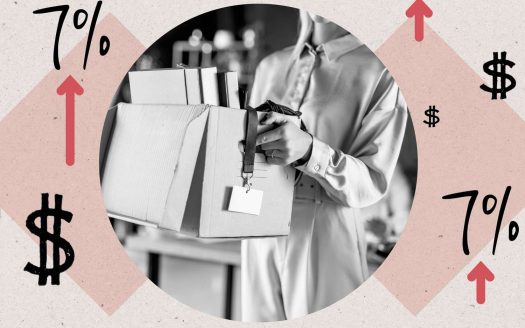How to get out of debt
[ad_1]
Debt relief comes in several forms, including debt consolidation, debt management, debt settlement, and bankruptcy. All of these approaches are aimed at easing your financial burdens and ideally becoming debt free. One approach may be better suited to your situation than another, so it's important to carefully weigh your options for debt relief.
Read on to learn how to get out of debt.
How to get out of debt
To become debt free, you need:
- Collect financial documents. At a minimum, you'll need credit card and bank statements and copies of recent paychecks.
- Assess your financial situation. Add up what you owe, what you spend, and what you earn and figure out the shortfall.
- Consider your debt relief options. You can consider , , , and .
- Research and apply for providers. Compare the fees and other requirements for participating in a debt relief program.
When is it a good idea to get debt free?
If you're having trouble managing your finances or can't keep up with credit card and other debt payments, it's a good idea to apply for debt relief. Here are some signs you may need to become debt free:
- You worry about overdue payments from creditors or collection agencies.
- You're constantly dipping into savings to pay off debt payments.
- You are routinely turned down for loans and credit cards.
- You work overtime to pay the bills.
- You are dealing with a debt-to-income ratio (DTI) higher than 43%. To calculate DTI, divide your monthly debt payments by your monthly gross income.
Note
People with a lot of debt are often the targets of debt settlement scams. In some cases, scammers may ask for an initial payment, but then offer no assistance. Experts advise not to make an upfront payment to debt settlement companies.
The following are four ways to become debt free.
Types of debt relief
Debt Consolidation
Debt consolidation involves rolling multiple debts, such as credit card or personal loan payments, into one monthly payment. Your options for debt consolidation include a balance transfer credit card, a debt consolidation loan, or a home equity loan.
-
Provides one monthly payment for several combined debts
-
Potentially offers interest savings on consolidated debts
-
Perhaps 30% of your FICO credit score lowers your credit utilization ratio
-
It may not solve your debt management problems like overspending
-
May include temporary rates for no-interest or low-interest debt consolidation products
-
Missed payments can put your credit score or, in the case of a home equity loan, your home in jeopardy.
Debt Management
A can help you get into a debt management plan.
One of the agency's counselors will act as a mediator between you and your creditors to develop a repayment plan. In some cases, the lender may lower the interest rate you pay.
Under a, you deposit money into an account maintained by a credit counseling agency every month. The agency then sends payments to your creditors, such as credit card issuers, lenders, and health care providers. You stay in the plan until your debts are paid off (usually three to five years).
-
Creates one monthly payment for several consolidated debts
-
It may cause interest rates to fall
-
It can improve your credit score
-
Part of your debt management plan requires closing all credit card accounts
-
Requires consistent monthly payments to maintain plan benefits
-
It may not include all your creditors
Debt settlement
Debt settlement companies, also known as debt rescue companies, renegotiate debts owed to creditors or debt collectors. However, the Consumer Financial Protection Bureau warns that working with a debt settlement company can be risky. For example, your credit score may drop 100-125 points after your credit report shows that you have paid off some of your debt.
The Federal Trade Commission warns that you should “watch out for unscrupulous debt settlement companies that make promises they can't keep, charge you a lot of money, and then do little or nothing to help you.”
-
It can allow you to pay off debts within two to four years
-
Eliminates the need to file for bankruptcy
-
It can avoid lawsuits from creditors or debt collectors
-
Involves high fees for debt settlement services (perhaps $500-$3,000 or more)
-
It can hurt your credit score
-
Not all loans are eligible
Bankruptcy
If a consumer with a large debt load files for bankruptcy, they usually file for Chapter 7 or Chapter 13 bankruptcy. This is a legal maneuver designed to help someone saddled with debt get a fresh start. One business erases most of your debt, while another creates a court-approved payment plan.
But of all the debt relief options available, bankruptcy can have the biggest consequences. One major drawback: A Chapter 7 bankruptcy can stay on your credit report for up to 10 years, while a Chapter 13 bankruptcy can stay on your credit report for up to seven years.
-
It offers the ability to store most of your assets
-
Stops debt collection and foreclosure
-
It prevents debt collectors from suing you for non-payment
-
It stays on your credit report for up to 10 years
-
It limits the ability to get credit
-
May exclude certain debts
What it takes to become debt free
What you need to get out of debt varies depending on the debt relief method you choose. In general, though, you'll need:
- Gather financial documents such as credit card statements, credit reports, and bank statements.
- Calculate how much you owe.
- Review the interest rates for your loans.
- Determine which debt relief option is best for you. Are your finances in good enough shape that debt management is the right way to go? Or is a last resort bankruptcy filing the best alternative?
- Explore the debt relief option of your choice. For example, what are the eligibility requirements for any credit counseling agencies you are considering?
Choosing a debt relief program and applying for debt relief
When deciding on a debt reduction program, consider the following:
- Fees: This is especially important if you use the services of a debt settlement company.
- Company reputation: Is the program long? What are online reviewers saying about it? Is it in good standing with the Better Business Bureau?
- Customer service: Has the app's customer service garnered a lot of praise or complaints?
- Required documents: For example, if you file for bankruptcy, the court will usually want to see documents such as income tax returns, proof of income, credit card statements, credit reports, bank statements, and pension statements.
Note
Keep in mind that if you deal with a debt settlement company, you may be charged a fee of 15% to 25% of the total debt paid. Debt settlement fees, which can exceed $3,000, are significantly higher than those associated with other debt settlement options. Note that debt settlement companies cannot collect fees before paying your debts.
Avoid scams to get out of debt
Many debt relief companies and organizations are on the rise. Unfortunately, some of them prey on desperate people. Here are four red flags to watch for to help you avoid falling for a debt relief scam:
- It gets to you first: If you haven't connected with a debt relief provider, you may be a target of scammers.
- Requires upfront payment: If a company or organization asks for payment before offering help, you're likely dealing with a scam.
- It makes promises that sound too good to be true: For example, a fraudulent debt relief company may claim that they can arrange a one-time settlement to reduce your debt by at least 50%. However, such an outlandish promise is unlikely to be fulfilled.
- It claims that signing up for its program will solve all your problems: No company or organization can guarantee that all of your debts can be paid off for pennies on the dollar or that they will disappear entirely.
The Best Debt Collection Software
| Company | Minimum Debt | Average Repayment Period | Fees | Types of debt |
|---|---|---|---|---|
| 7500 dollars | From 24 months to 48 months | 15% to 25% of the total debt | Unsecured personal loans, credit cards, medical debt | |
| Not disclosed | From 28 months to 48 months | Not disclosed | Unsecured personal loans, credit cards | |
| Not disclosed | From 24 months to 48 months | 15% to 25% of registered debt | Unsecured debt, credit cards, payday loans, some private student loans | |
| 5000 dollars | From 24 months to 48 months | Not disclosed | Unsecured personal debt, business debt, IRS debt, back taxes | |
| $10,000 | From 12 months to 48 months | 15% to 25% of the total debt | Unsecured personal debt, credit cards, medical debt | |
| Not disclosed | From 24 months to 48 months | 18% to 25% of total debt | Credit cards | |
| None of them | Not compatible | One-time setup fee $0-$50 and monthly $0-$75 | Credit counseling, debt management |
Alternatives to Debt Relief
If you are looking to become debt free, your options are not limited to those that fall under the umbrella of debt relief. Here are three alternatives.
- Try DIY debt negotiation. Instead of depending on a company or organization to handle your debt situation, you can negotiate with creditors on your own. For example, you can reach an agreement with the lender to lower your interest rate or monthly payments.
- Meet with a financial planner. A financial planner or other financial professional should be able to help you manage your finances by coming up with debt management strategies.
- Stick to the budget. Taming your debt can be as simple as creating a budget and sticking to it religiously. You can rely on technology like budgeting software or a spreadsheet to track your income and expenses.
Frequently asked questions
How do you qualify for debt relief?
It depends on how you qualify to be debt free. For example, National Debt Relief, a debt settlement company, requires that you owe at least $7,500 and be able to make monthly payments into a settlement fund to qualify for its services.
How long does it take to become debt free?
A transaction through a debt settlement company can take two to three years. Meanwhile, the bankruptcy process can take anywhere from four months to five years, depending on whether you seek Chapter 7 or Chapter 11 bankruptcy. And a debt management plan can take three to five years to complete.
Does being debt free hurt your credit?
Almost any, at least for a short time. Bankruptcy usually has the longest-lasting effect, though it can stay on your credit report for up to 10 years. According to the credit scoring company FICO, someone with spotless credit and a very high score can see a “big drop” in their FICO score after bankruptcy. On the other hand, someone with many negative marks on their credit report may see only a “modest drop” in their FICO score after bankruptcy.
Can the debt be forgiven?
Yes, . This means that the creditor declares that you are not responsible for paying back some or all of your debt. Debt forgiveness is often associated with debt repayment. Types of debt that can be forgiven include credit cards and student loans.
Thank you for your feedback!
[ad_2]
Table of Contents



:max_bytes(150000):strip_icc():format(jpeg)/Primary-Image-how-to-get-debt-relief-in-2023-7508754-c43ab0695c534bbaaf9bcf65bea2935b.jpg)

